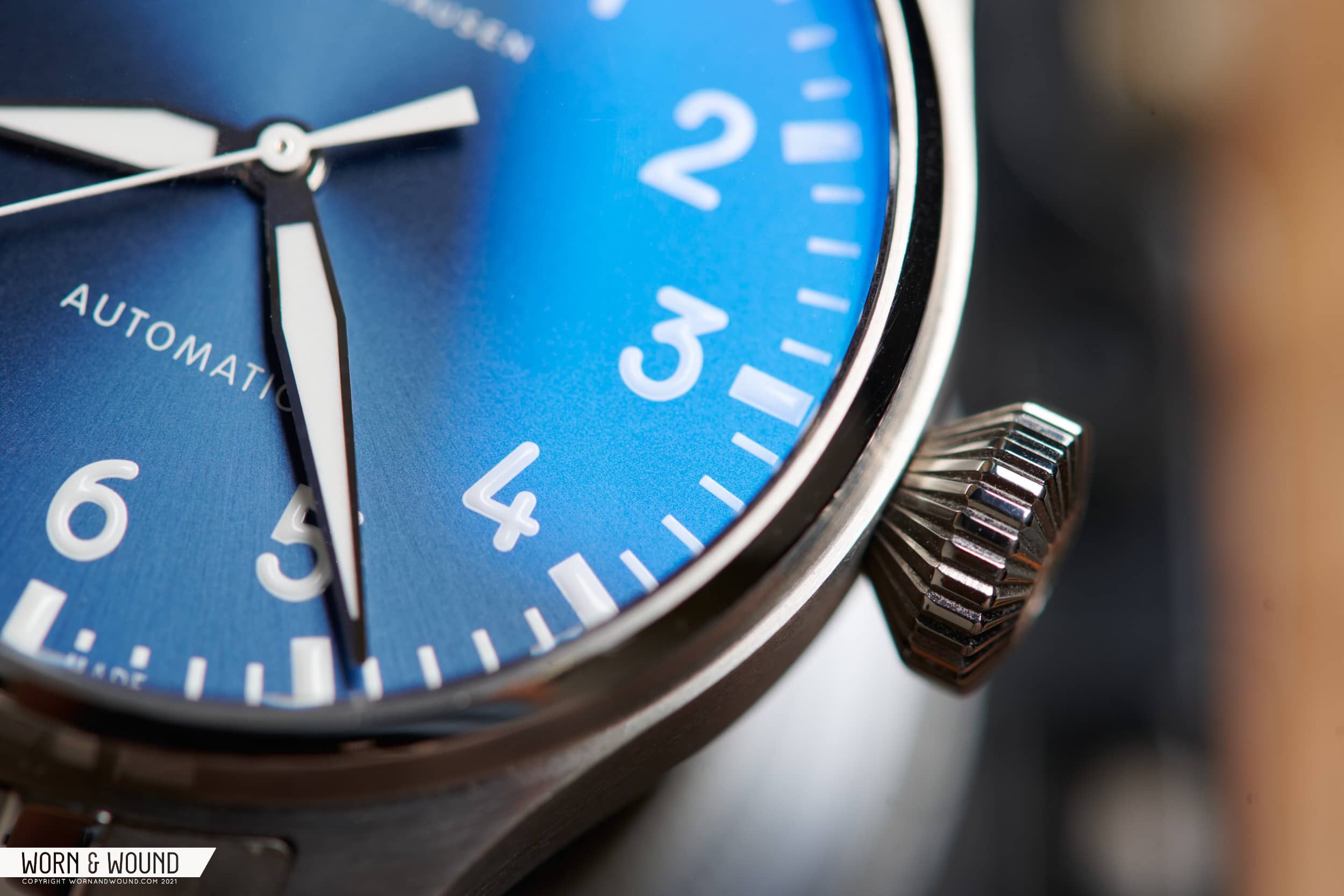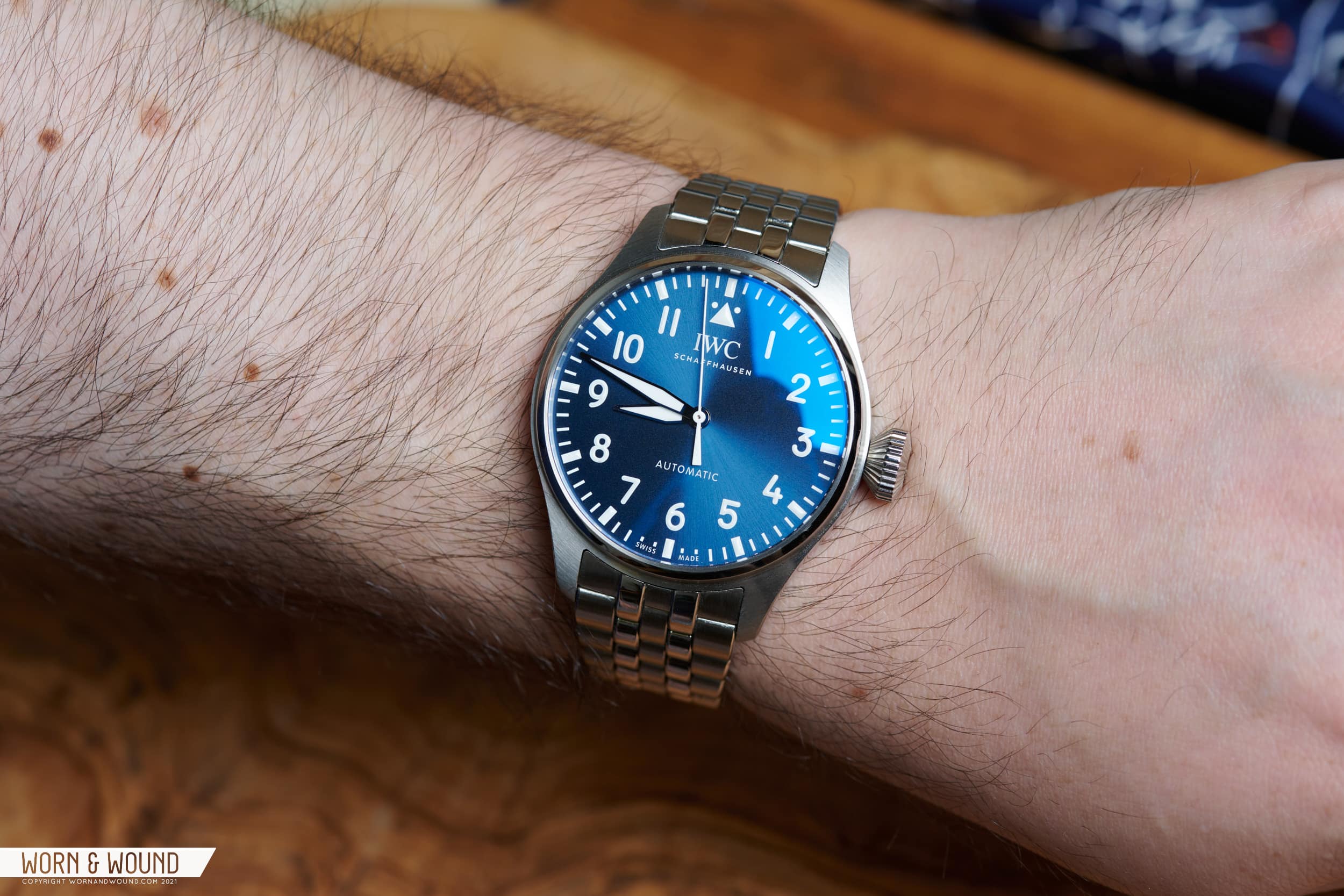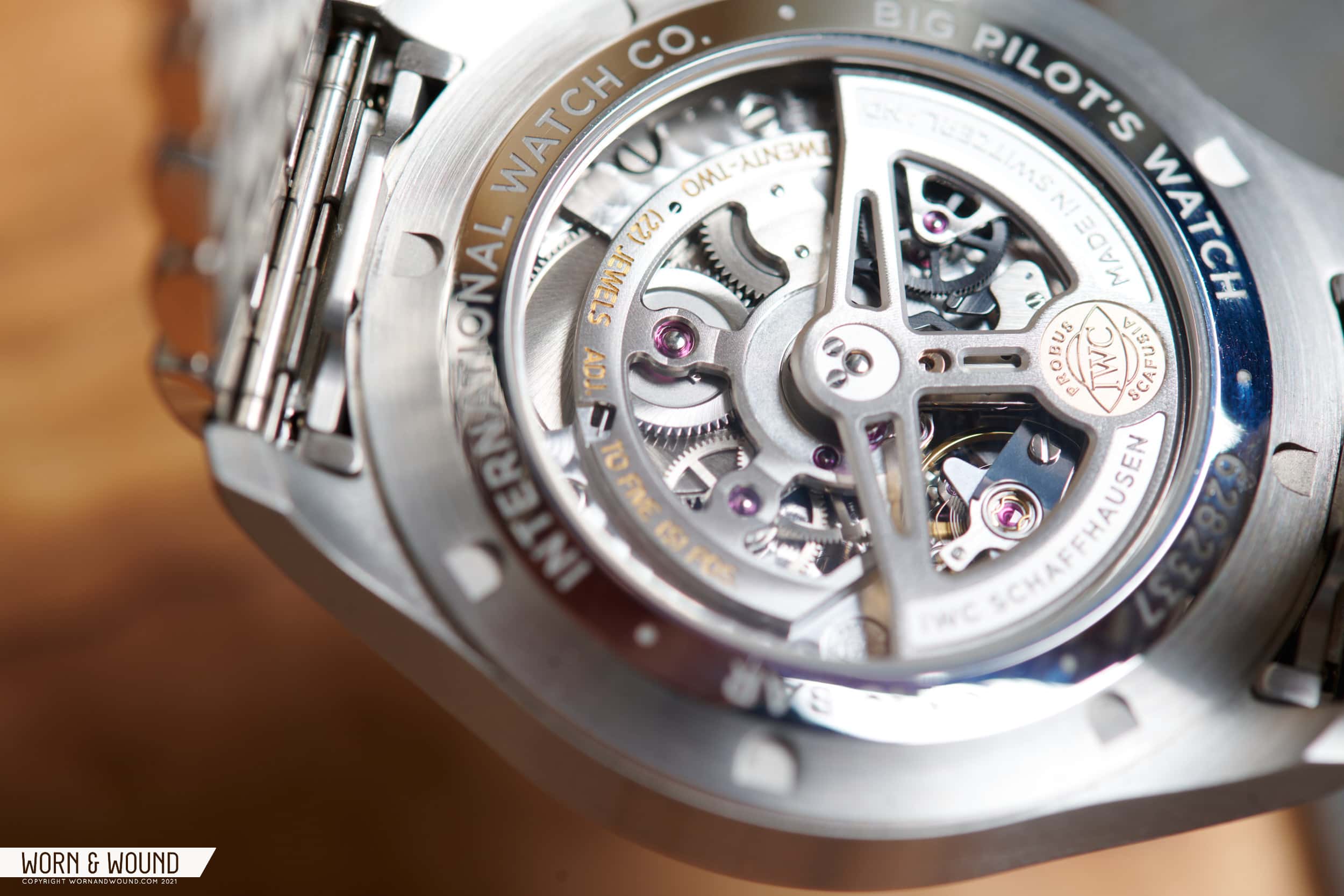Certain components of this movement (and others in the larger 52000 Calibre family of IWC movements) that are particularly at risk of wearing down over time are made of an extremely durable ceramic. Looking at the caliber through the caseback, you can see the black ceramic automatic wheel quite clearly, and smaller components have also been made from the material. Making ceramic components of this size at scale obviously presents a unique challenge for IWC, and likely contributes somewhat to the high cost of the watch. The end result, if IWC is to be believed, is that service intervals will be longer, and repair bills a little less eye watering. It’s very cool technology, to be sure, but naysayers will of course point out that proprietary materials like these further tie customers directly to the brand – there’s likely no use in having your Big Pilot 43 serviced by the neighborhood watchmaker, if you’re lucky enough to still have one. Such is the state of watch collecting in 2021.
Conclusions
This watch fully worked on me. I enjoyed every minute of my time with it, except for the very last one, when the separation anxiety began to kick in. I’m now back to wearing and enjoying my own watches, but they don’t have the bombastic appeal of the Big Pilot 43. As I finish up this evaluation of the watch, I’m not entirely sure if that’s a good or bad thing.
Part of any watch review, whether it’s intentional or not, involves asking yourself if you could live with this watch in your own collection, and what that would look like. The prospect of owning and living with a watch that you’ve spent real money on is obviously inherently different from sampling a watch that requires no investment whatsoever, so the best you can ever do is a thought experiment. Here’s what I’ve come up with, after quite a bit of thought: for me personally, I don’t know that the BP 43 would ever find a place in my watch box, because I don’t know that the experience of owning it forever could beat the hot flash of lightning that is the short sample period, where you can wear it exuberantly for a short period and then give it back.
![]()
The Big Pilot 43, on a bracelet, but with all the other straps that you really want because the quick change aspect is really quite cool, creeps pretty close to $10,000 (although retail price on the watch with just the leather strap sits at $8,400, on a bracelet it’s $9,350). Now, that’s a big number. It’s nearly a five digit number. But it’s not a number that’s crazy. It’s a number that, with some planning, saving, consolidating, zero-interest credit card promotions, and luck (we really need BTC to break out soon, here) many enthusiasts could potentially afford if they really wanted it. For me though, a five figure watch is a watch I’d have to be pretty sure I’d want to wear every day, until I’m extremely old, and I don’t know that the Big Pilot 43 is that watch. For a few weeks it’s a lot of fun to wear something that’s brash and flashy – but for years? Day in and day out? As I said at the top, I’m not that guy.
Of course, this is, as I said, a thought experiment. No watch has to be worn day in and day out. Maybe it would be fun to be flashy for a few weeks at a time and then put it away for a, oh I don’t know, a Grand Seiko under 40mm? And maybe you are that guy who wants something that’s a bit loud and aggressive, but also undeniably well crafted and held together by a coherent design proven over the course of decades. If that’s you, and you’ve got the wrist for it, the Big Pilot 43 is more than worth a look. And if it’s not you, that’s ok too. I hear IWC makes their pilot’s watch in a few different flavors. IWC









 Featured Videos
Featured Videos




















